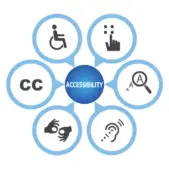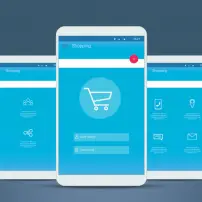The chatbot has made significant strides since the earliest iterations just a decade ago. It is defined as a service, powered by rules and sometimes artificial intelligence, that interacts via a chat interface. Years ago, chatbots like Microsoft Word’s pixilated paperclip, Clippy, assisted users by answering basic questions and performing rudimentary tasks. Many users would argue this early chatbot wasn’t the most well executed solution from a user experience perspective. Advances in machine learning and artificial intelligence in the subsequent years have opened the doors to immensely more powerful Chatbots that often don’t require visual interfaces at all—most notably Amazon’s Alexa and Apple’s Siri.
Thanks to these advances, chatbots are now more intuitive and helpful than ever. Many of the tech sector’s power brokers understand the inherent value and have established strategies to claim majority stakes.
Even if your business doesn’t have the clout of a Silicon Valley giant, there are still plenty of ways that chatbots can be of use to your organization. But compelling the members of your C-suite to buy in might be a difficult proposition. If you’re in the process of trying to convince the decision makers in your organization about the value of deploying chatbots, here are a few arguments to aid your cause.
The Customer Perspective
Consumers today have many expectations that can be met by deploying chatbots. Consumers expect the ability to make quicker and more convenient purchasing decisions. They want to be able to resolve customer service issues on first contact, and consumers also expect a diverse but seamless channel experience. Chatbots can be deployed in applications, social media, your website and messaging platforms to handle both sales and service inquiries quickly, hitting many of the benchmarks by which consumers will evaluate your brand.
The Personnel Perspective
Chatbots can be incredibly valuable assets for internal business functions as well. By leveraging chatbots to resolve basic customer needs, employees from the contact center to the sales department will be able to refocus their energy on more complex matters.
Even processes that have no customer interaction can benefit. By deploying a chatbot within your intranet or portal, employees can autonomously manage many of the administrative tasks for which they’re responsible. Giving employees the ability to use chatbots internally can increase productivity and engagement, both of which will support your company’s bottom line.
The Cost Perspective
One of the biggest arguments you’re likely to hear from the C-suite is that it’s frivolous to invest time and capital in a new technology that they’ve done well without until this point. You can help them understand that building a chatbot is not an expensive project. A basic bot can be built quickly using open source tools, and it won’t cost much to maintain. New features can be added as needed, so the projects can be scaled as the C-suite becomes more familiar with the tech—and the return on their investment.
Chatbots provide a unique opportunity to increase earnings. By filling out your digital channels, chatbots can help lower the acquisition cost of new customers and assuage the concerns of existing customers. Chatbots can fill roles within your organization, offloading unnecessary work from your personnel. This can increase performance and employee engagement, both of which can be correlated to your profits.


